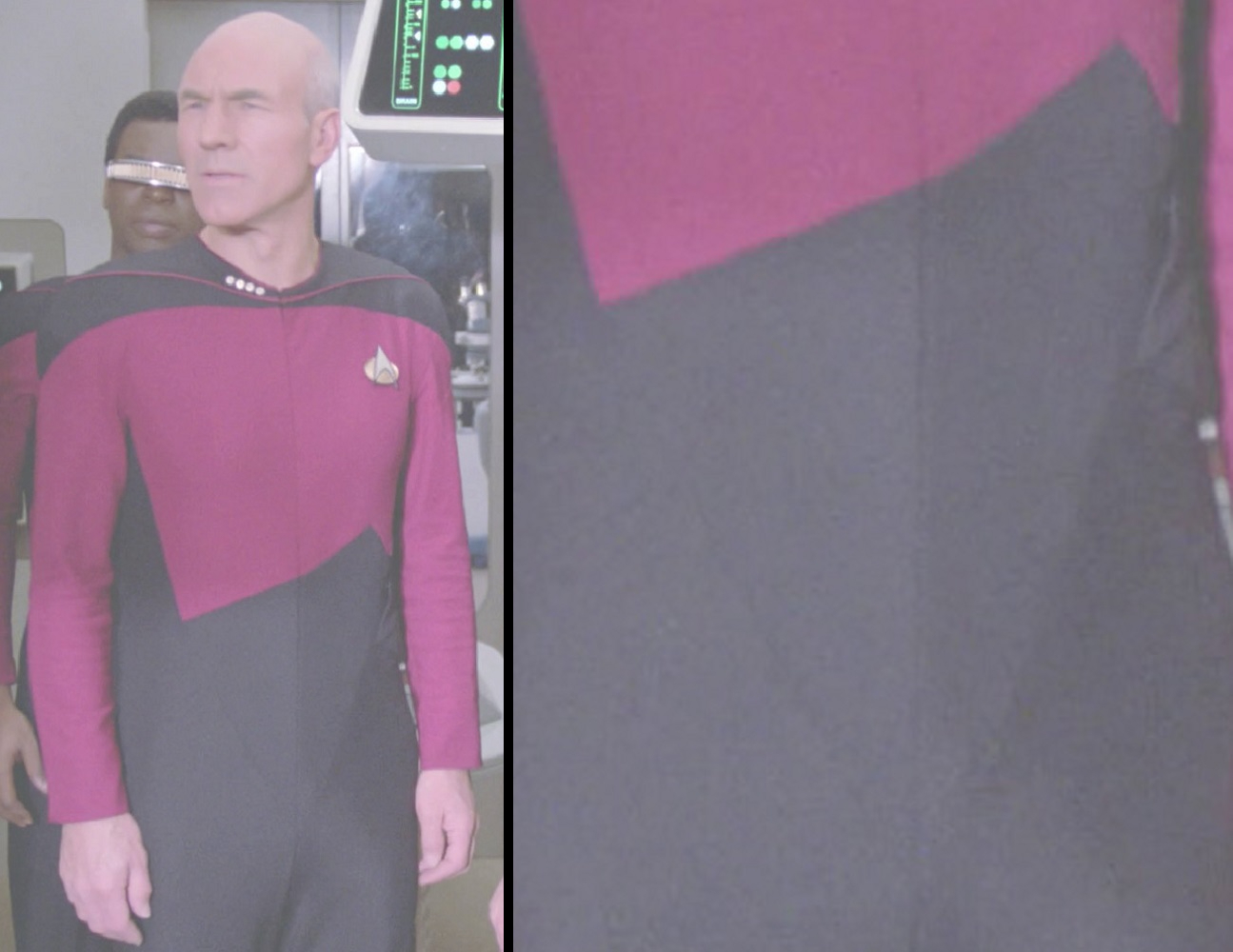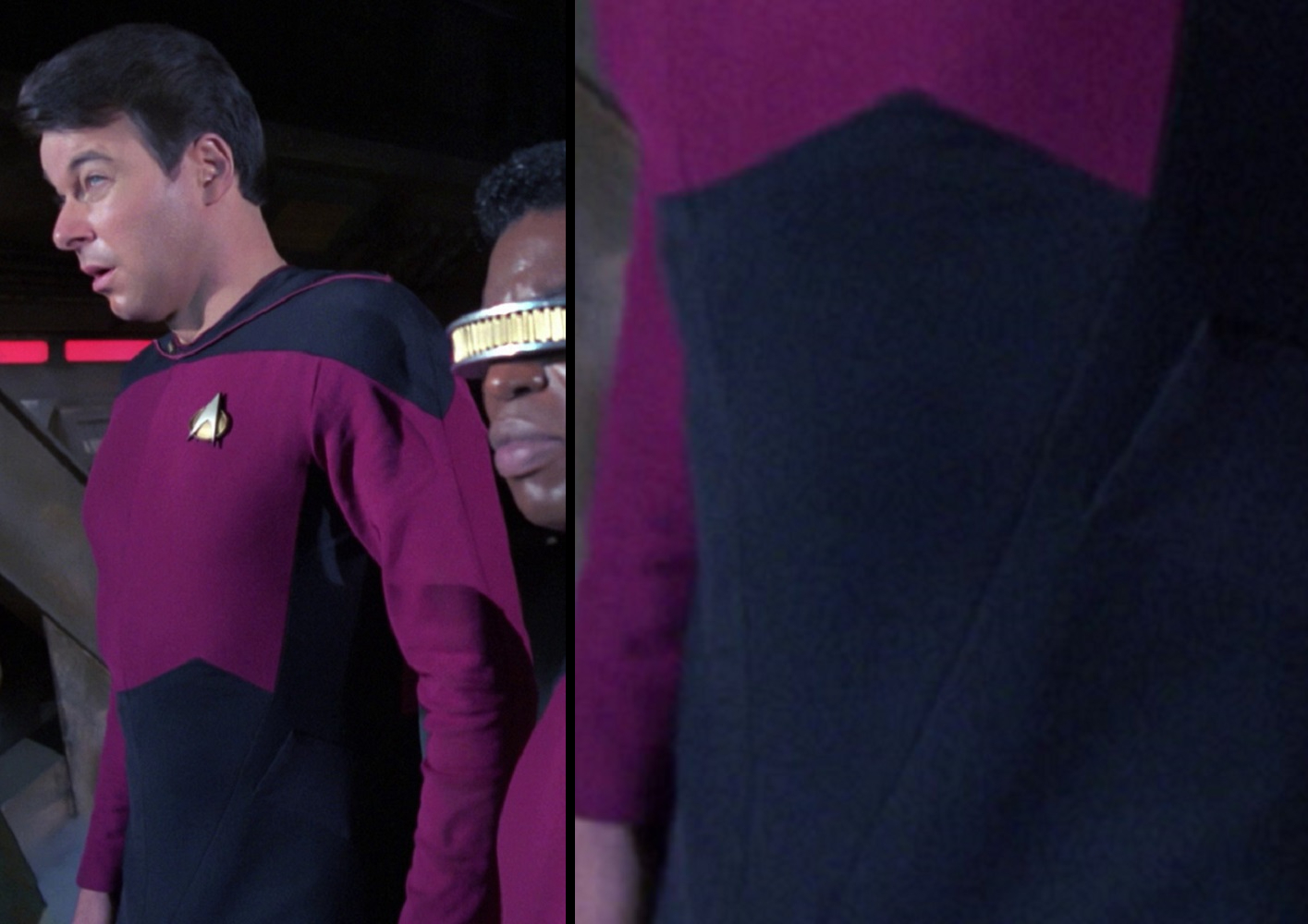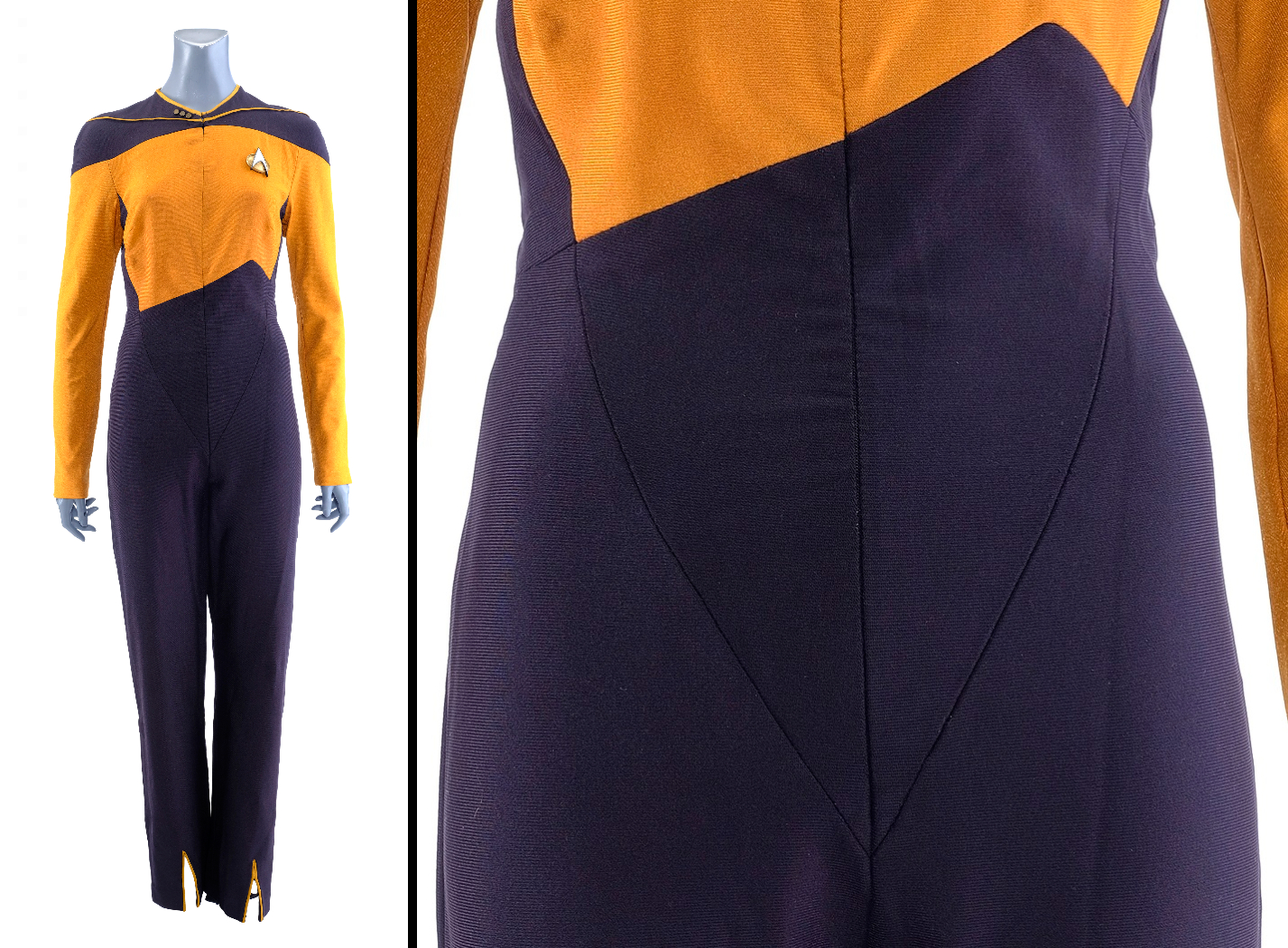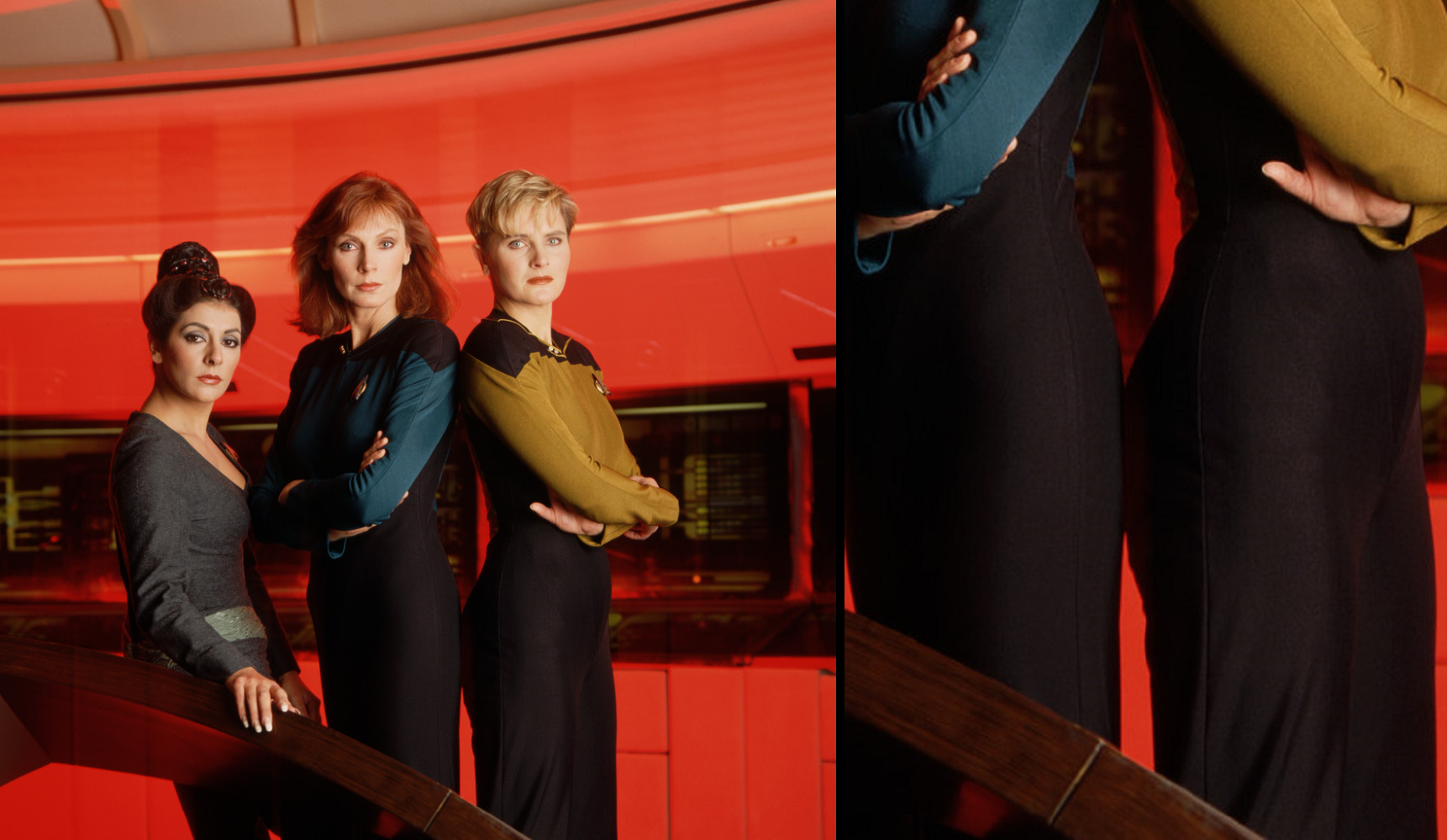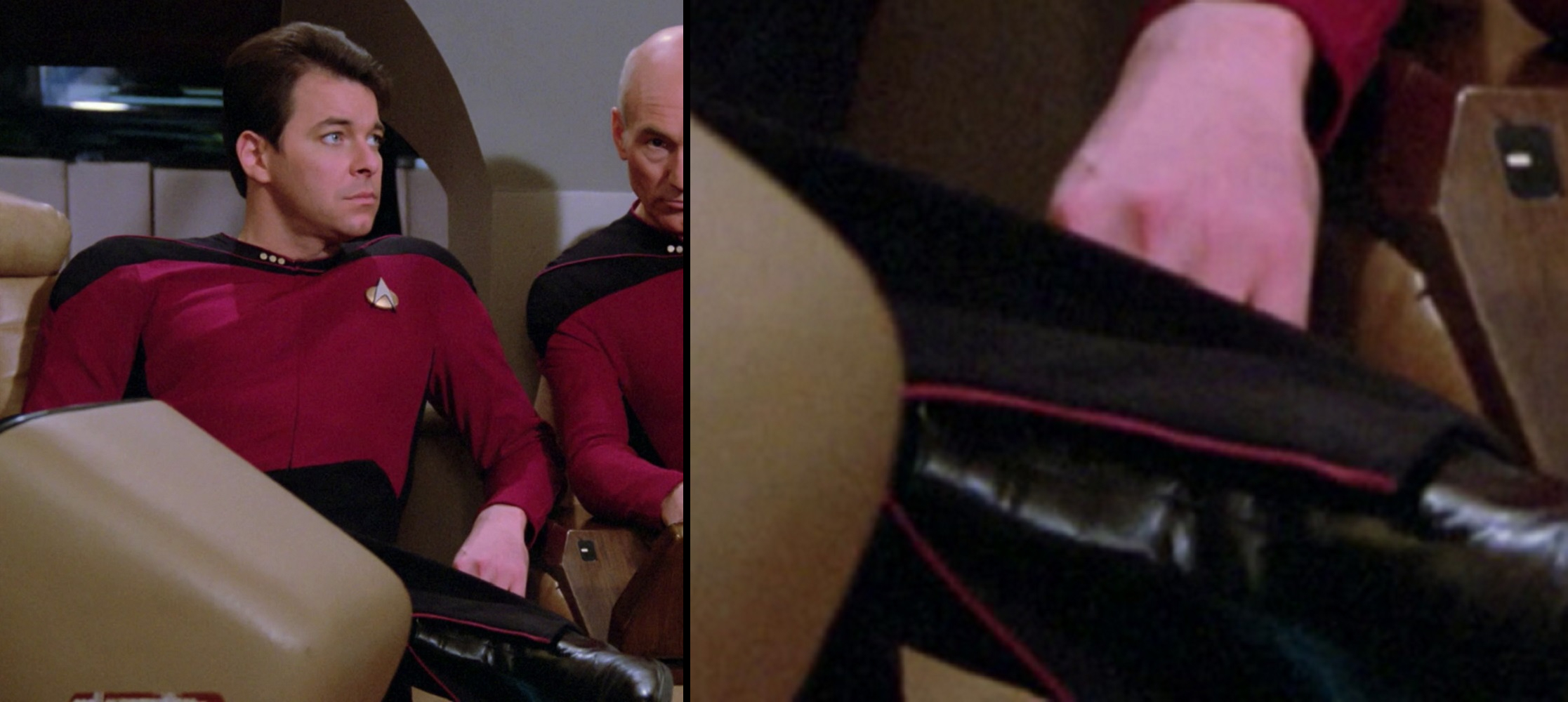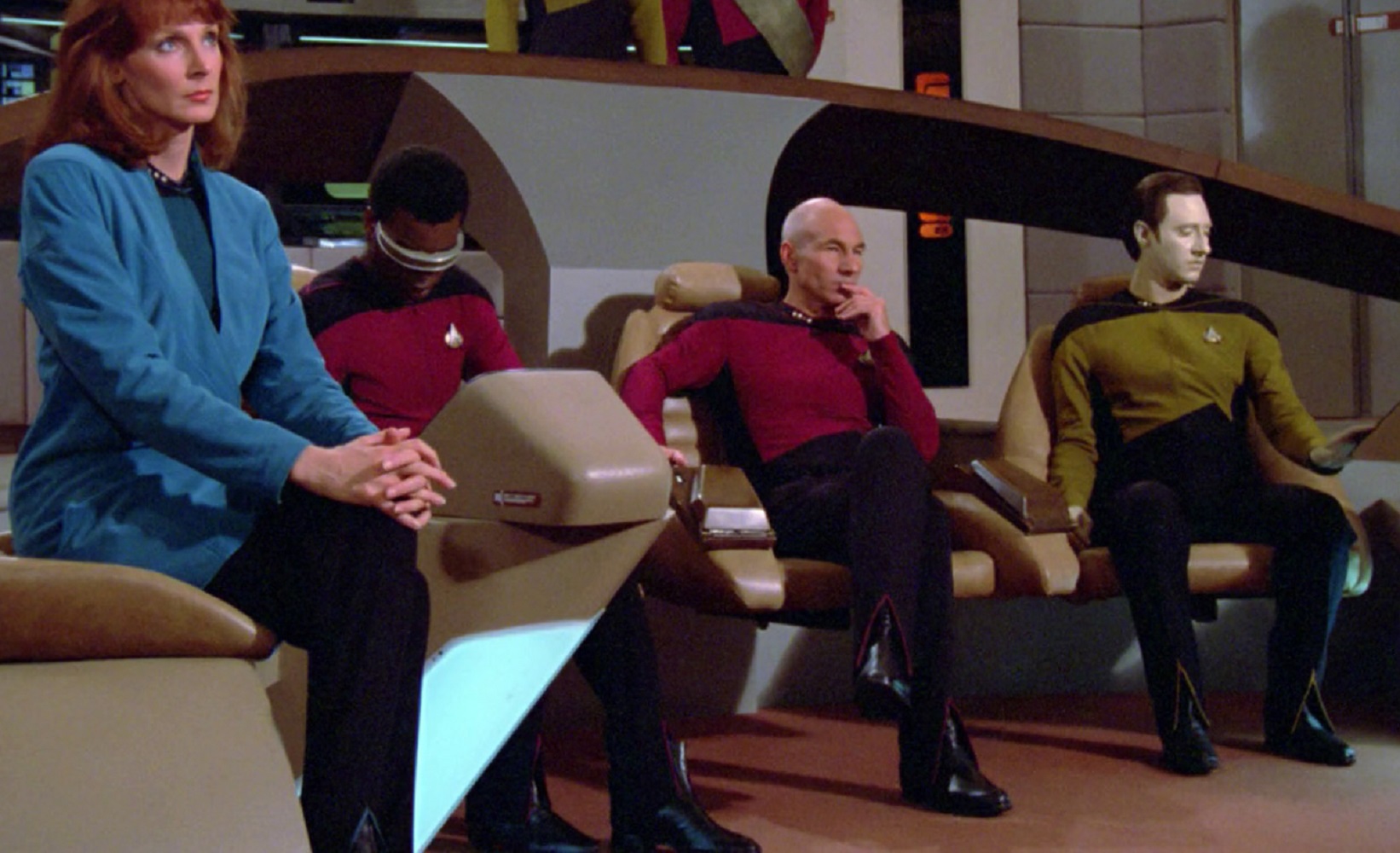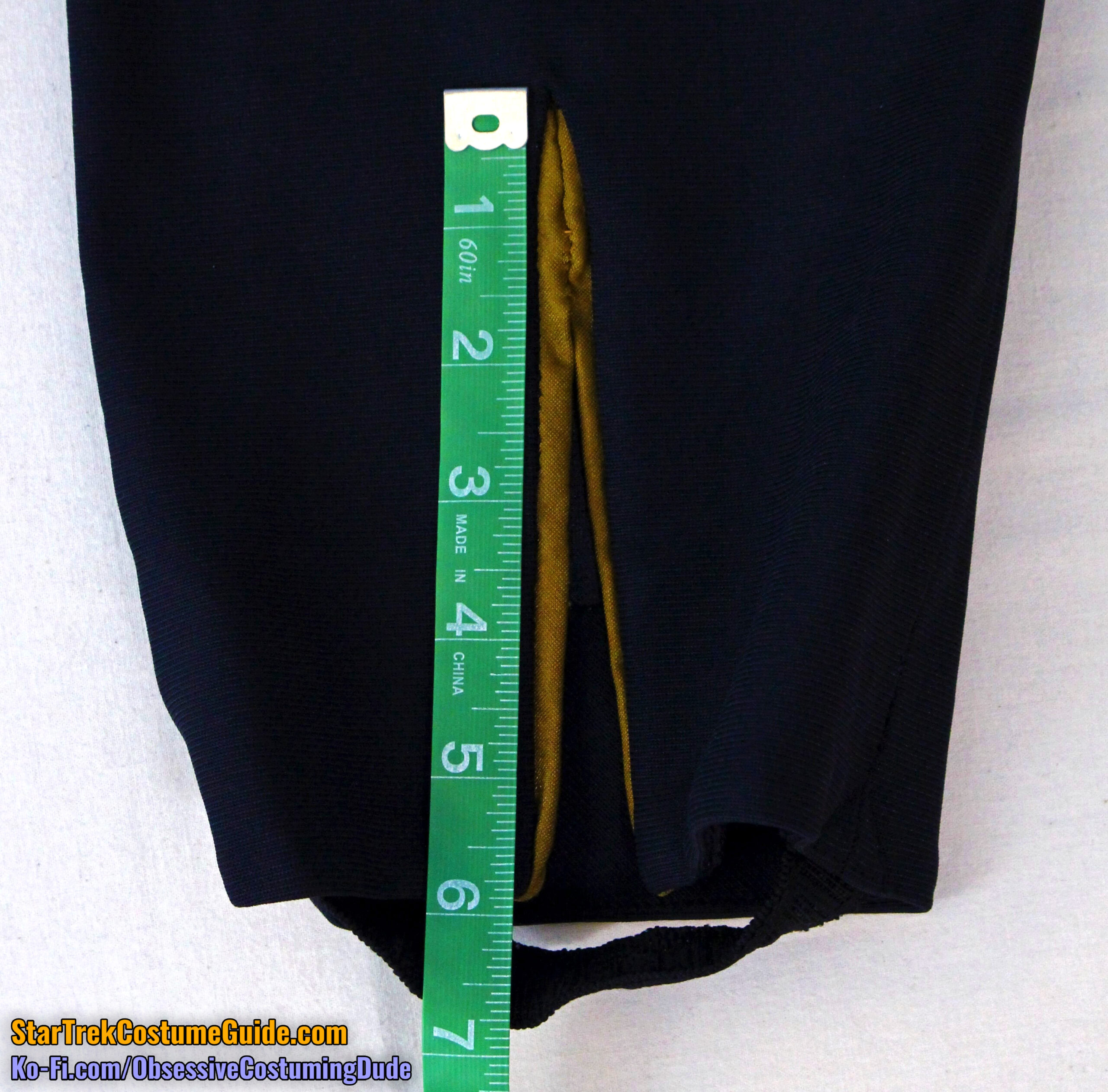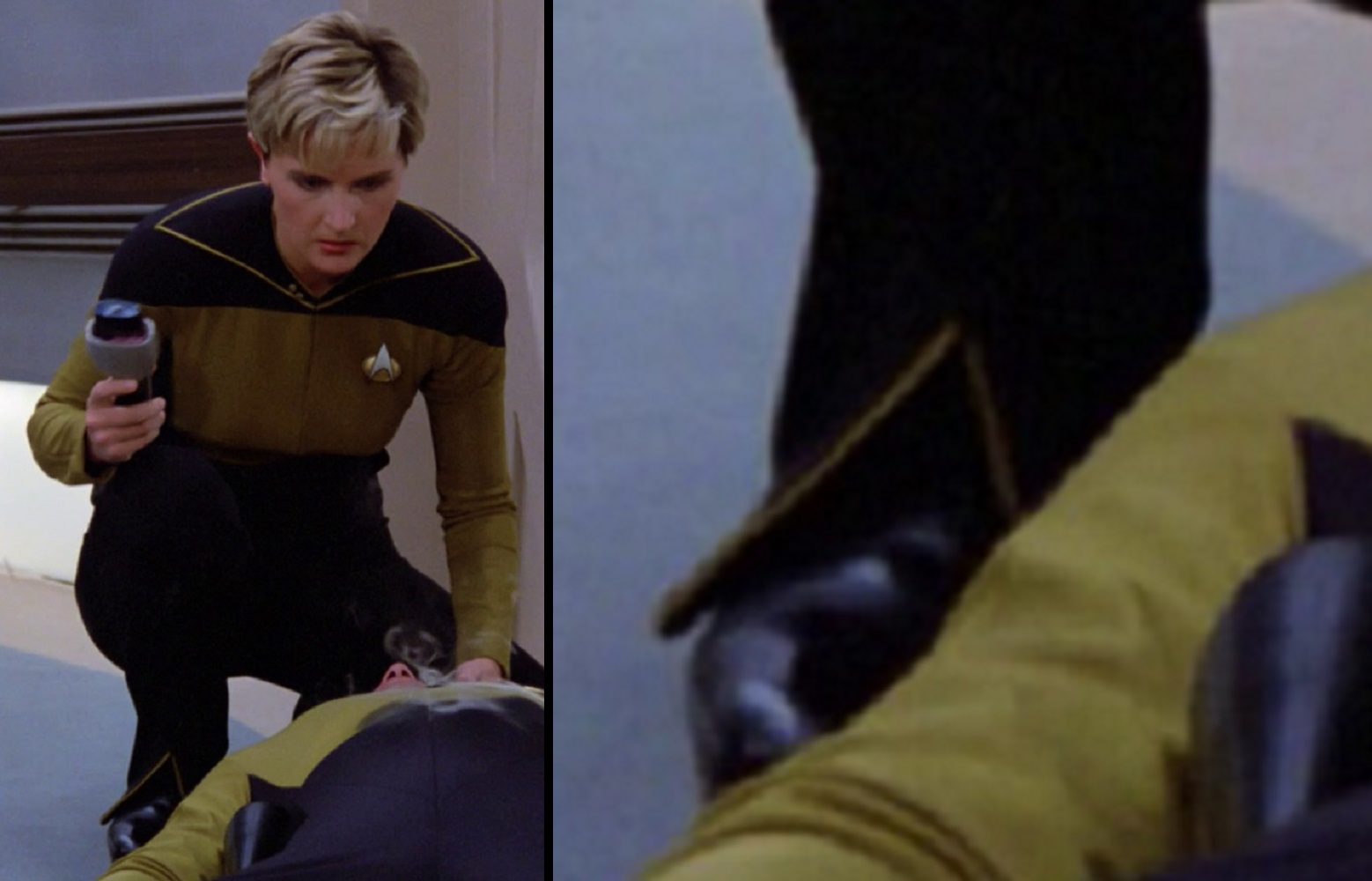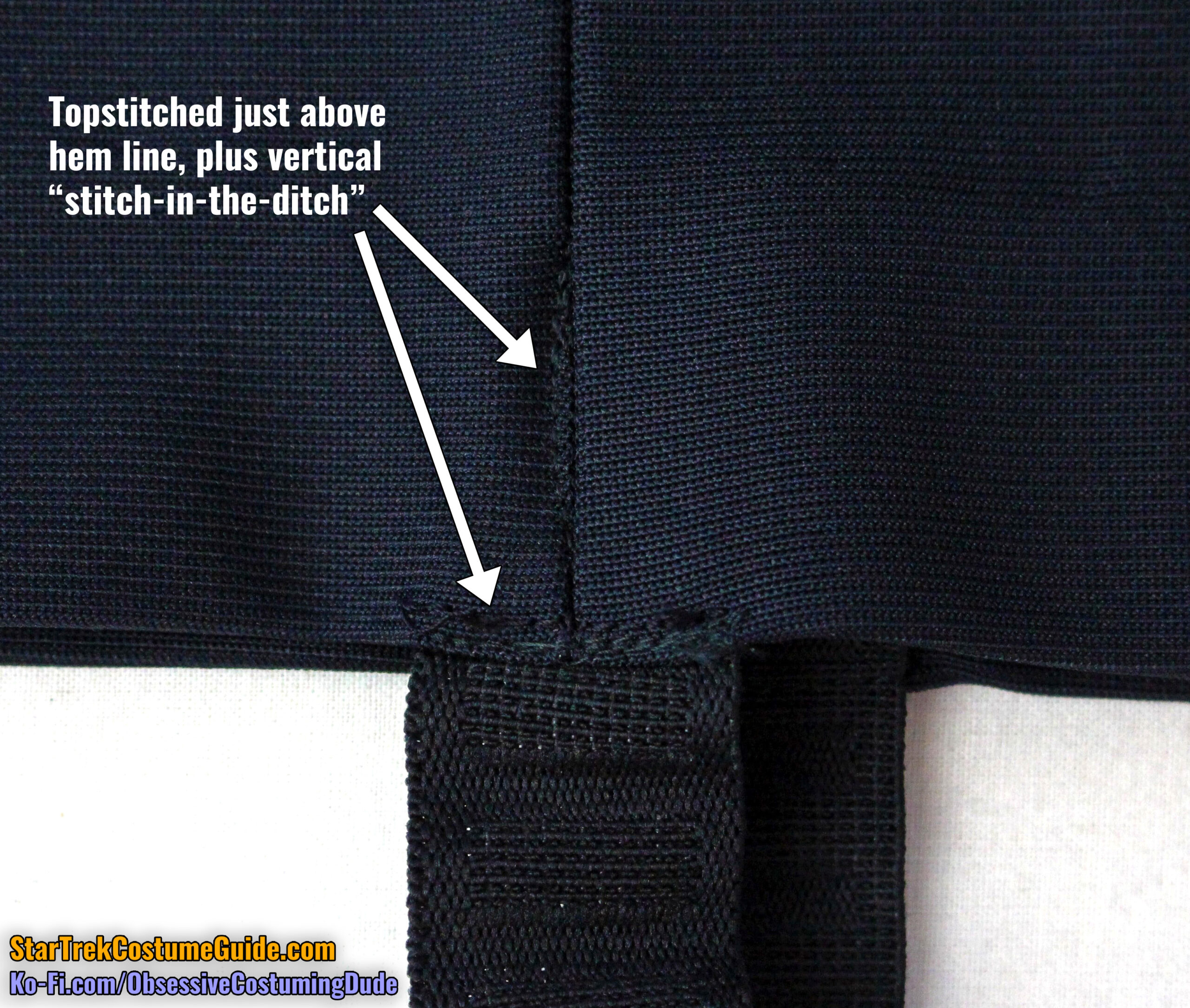Lower Front Seams
In addition to the center front and asymmetrical waist seams, the TNG jumpsuits had two diagonal seams on the lower front torso.
Like the side waist seams, these were somewhat difficult to see in the show, but they were visible sometimes.
These diagonal lower front seams are easier to see in auction photos.
Also observe that these seams were slightly curved.
These diagonal seams cleanly intersected with the side front seams at the waist.
These seams didn’t extend all the way down to the lower crotch; they began around hip-level.
On the screen-used women’s TNG jumpsuits I examined, all three of the lower front seams (the lower front and both diagonal seams) were cinched in a bit up toward the waist, essentially functioning as fitting darts.
On the screen-used Worf TNG jumpsuit I examined, only the lower center front/zipper seam was cinched in up toward the waist; the diagonal lower front seams were flush.
(As a single reference, I’m not sure how indicative the Worf uniform is of the other male TNG jumpsuits in this regard, but since men’s garments generally have milder waist-to-hips ratios than women’s, I think it’s probably safe to assume at least some of the other men’s uniforms were patterned this way too.)
Pant Leg Seams
Aside from the (triangular and kite-shaped) lower front panels, the TNG jumpsuit pant legs were a basic, four-panel construction: right front, left front, right back, and left back.
Naturally, there was a center back seam beneath the asymmetrical waist.
You can see the pant legs’ side seams more clearly in this season one publicity photo.
The inseam was more difficult to spot (for obvious reasons), but nevertheless, it was there.
Pant Leg Slits
These slits were accented with thin lengths of division-colored trim – the same lightweight spandex fabric used on the necklines and yokes.
The red and gold trims were relatively easy to see at the bottom of the pant legs.
Like the neckline/yoke trim, the lower pant leg trim varied a bit in width but appears to have ideally been about 3/16” wide.
The height of these lower front “slits” varied (because of course they did).
On the screen-used Dr. Crusher TNG jumpsuit I examined, the slits were about 4 ½” tall.
On the screen-used Worf TNG jumpsuit I examined, the slits were about 5 ½” tall.
On the screen-used Tasha Yar TNG jumpsuit I examined, the slits were just shy of 6” tall.
Overall I would estimate most of the uniforms had slits in the 6” range, although again, they were at least somewhat inconsistent.
Observe in the example below how Tasha’s pant leg “slit” clearly appears to have been taller than Picard’s.
In season one, the lower pant leg trim was one continuous strip of fabric around the opening, with the layers diagonally sewn together across the top to anchor them.
Here’s a look at the underside of the lower pant leg on the screen-used Tasha Yar uniform I studied.
Unfortunately this method is somewhat difficult; for example, on the screen-used Dr. Crusher uniform I studied, the pants trim looked great on one side but the other was a “clean miss.”
As you may have also noticed, the length of the diagonal upper trim stitching (and by extension, how much of the trim was joined at the top) varied as well.
Observe how the uppermost couple inches or so of the trim were sewn closed on the Tasha Yar jumpsuit, but only the top ½” or so on the Dr. Crusher jumpsuit.
And for your amusement, here are two pant legs on which the trim sewn closed by different extents … on the same uniform!
Whether by design or by error, it looks like some of the pant leg trims weren’t closed across the top at all.
In any event, the lower pant legs had a wide rectangular facing panel underneath, cut from the same black jumbo spandex as the rest of the pant legs.
This facing was sewn to the underside of the trim, understitched, and the outer edges were catch-stitched to the underside of the pant leg with black thread.
Elastic Stirrups
Another neat element William Ware Theiss incorporated in the TNG jumpsuits was elastic “stirrups,” which wrapped around the boots underneath the heels.
These elastic stirrups prevented the pant legs from pulling upward or twisting much, keeping the pant legs looking nice and sharp – even in the unlikeliest of times, further adding to the illusion of futuristic clothing.
You might be tossed around in an out-of-control turbolift while the ship is trying to kill you, but at least your pant legs would still look great!
Unfortunately, this superbly-clean look came at the high price of the wearer’s discomfort; these stirrups were a major reason why the cast hated wearing these uniforms.
As quoted in Star Trek Costumes: Five Decades of Fashion from the Final Frontier, Jonathan Frakes evidently groaned at the mere mention of these stirrups and said, “They were [spandex], with a stirrup that went under the boot. So whenever we were between shots, it was a little bit of relief if we took the elastic stirrup out from under the heel of our boots. That was what gave the whole costume that wonderful line. No seams, no pockets, and just one zipper at the neck. It was absurd. I ripped more than one of them off in frustration. That spacesuit* was my least favorite part of the job.”
* The cast often tended to call their uniforms “spacesuits.”
While pulling the pant legs taut, the stirrups also put strain on the actors’ shoulders as they pulled the rest of the costume downward. (Remember the jumbo spandex was cut so it stretched vertically, from head-to-toe.)
The result was a costume that pulls the wearer into a hunch, making them feel compressed …

These elastic stirrups were attached to the lower pant legs in a variety of ways; my guess is that inconsequential details like this were likely left to the discretion of the individual making the costume.
On the screen-used Tasha Yar TNG jumpsuit I examined, the elastic stirrups were attached with triangular-shaped topstitching.
On the screen-used Dr. Crusher TNG jumpsuit I examined, the stirrups were attached via an edge-stitch just above the hem, and a “stitch-in-the-ditch” above that.
And on the screen-used Worf TNG jumpsuit I examined, the stirrups appear to have been hand-sewn to the underside.
“Stirrups” are a time-honored tradition, as R.I. Davis noted in his excellent book, Men’s Garments 1830-1900.
Jason MacGlochlainn also mentioned these in his own wonderful book, The Victoran Tailor: An Introduction to Period Tailoring.
Pant Hem
The hem allowances ranged from about 1 ½” to 2 ¼” on the screen-used season 1 jumpsuits I examined.
The screen-used Tasha Yar TNG jumpsuit pant legs were actually hemmed with a bias-cut facing, which was also understitched just above the hem line.




